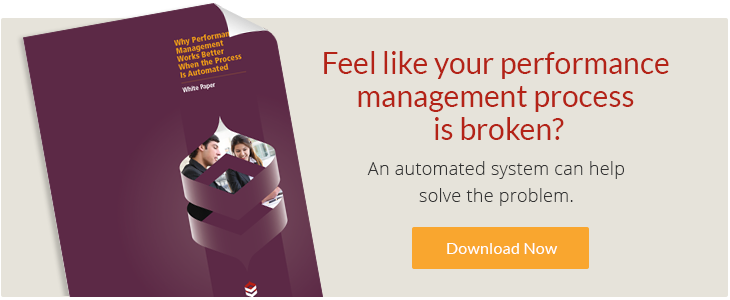How to Improve Employee Performance in 4 Steps

The performance appraisal. Love it? Hate it? Honestly, when it comes to employee performance there really isn’t any other way to improve the quality of their work. However, there are ways to botch the process if you don’t conduct these vital performance methods correctly. Whether your organization likes formal performance appraisals or prefers a casual, real-time approach, there are ways to make sure your team gets the most out of your feedback. Thorough communication and preparation lay the groundwork to improve employee performance. Here are four ways to get started:
Step #1: Communicate performance expectations
The job description may be a cryptic determinant to employee performance, but employees need to understand what is expected of them from management. Communication before performance problems occur is an indispensable method to creating an environment of development. If leadership purveys the necessary information ahead of time, employees will have a greater understanding as to how they will be evaluated in the future.
Step #2: Follow-up after the performance appraisal
The purpose of conducting a modern performance appraisal is to professionally develop employees. However, 40.1% of supervisors fail to follow-up after the performance reviews to see the progress of their team’s work [1].Mona Berberich explains,
“If you want to permanently succeed, you need to create and instill a routine. One workout is not going to make you look like Arnold. Schedule regular appointments and follow up with your employees’ performance.”
Step #3: Prepare yourself
Step #4: Challenge your employees
“Try giving them higher-stakes work that addresses more complex problems and a more diverse set of stakeholders. For example, it might be time for one employee to take a divisional program to the entire company. Remember to make it hard in the right ways though…. You want to productively expand on the meaningful work they’re already doing.”
Sources:
[1] HR Daily Advisory – Supervisors’ Most Common PA Mistakes (2014 Performance Management Survey)
[2] CEB – High Potential Employees – 55 Percent Set to Leave
[3] HR.BLR.com – Infographic: 2014 employee performance appraisal practices
Explore Our Related Topics:
● Is Employee Motivation Increasingly Out of Control?
● Employee Morale Eroding Like the Grand Canyon
● Recognizing the Difficult Dual Role Managers Play – Coach and Mentor

